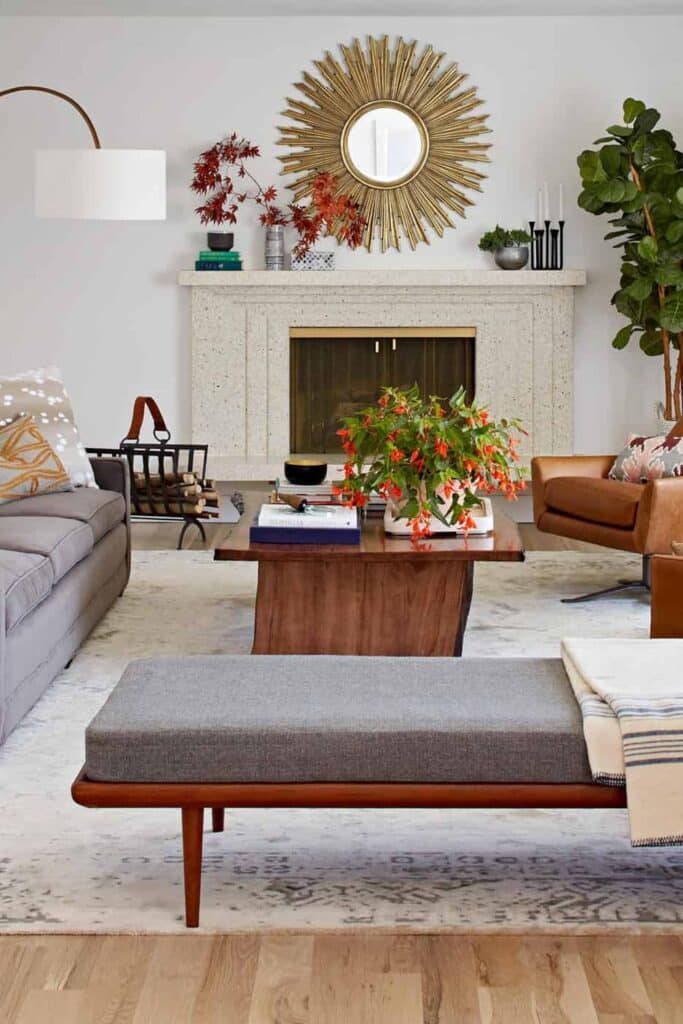
In the ever-evolving world of interior design, living rooms continue to be the heart of our homes. As we move through 2025, exciting new trends are transforming these spaces into something truly special. I’ve spent the last decade with my hands deep in fabric swatches and paint chips, watching trends come and go like seasons. But this year? It’s something else entirely.
The pandemic-era focus on functionality hasn’t disappeared—it’s evolved. We’re seeing a fascinating blend of practicality and pure aesthetic indulgence that feels both fresh and familiar. Homeowners aren’t just designing for comfort anymore; their creating spaces that tell their unique stories.
Gone are the days when everyone’s living room looked like a carbon copy from the same catalog. The 2025 living room celebrates individuality while embracing some universal shifts in how we think about our most communal spaces. Let me walk you through the 25 most compelling trends that are defining living rooms this year.
Biophilic Design Takes Center Stage

Plants aren’t just accessories anymore—their the main characters. The biophilic revolution has reached its peak in 2025, with living rooms essentially becoming indoor gardens. We’re talking statement trees, living walls, and specialized plant lighting systems integrated directly into the architecture.
What’s new this year is the sophistication of these setups. Smart self-watering systems with app integration ensure even the most forgetful plant parents can maintain a thriving indoor jungle. The most fashionable homes feature climate-controlled zones specifically designed to support exotic plant varieties that would’ve been impossible to maintain indoors just a few years ago.
Smart Furniture That Actually Makes Sense

Remember when “smart furniture” meant a couch with a USB port? Those days are long gone. In 2025, truly intelligent furniture has arrived, with pieces that adapt to your body, mood, and activities.
Sofas now feature embedded sensors that adjust firmness based on who’s sitting where, remembering your preferences over time. Coffee tables transform from dining surfaces to workstations with voice commands or subtle gestures. The technology has finally become invisible enough that it doesn’t scream “gadget”—instead, these pieces look like normal, beautiful furniture until the moment you need them to be something more.
Handcrafted Heritage

As a counterpoint to all this technology, there’s been a massive resurgence in appreciation for handcrafted items with provenance. Living rooms are showcasing artisanal pieces with stories—whether it’s a coffee table made by a local woodworker or textiles created using traditional techniques from around the world.
What makes this trend distinctly 2025 is the transparency. QR codes discretely placed on these items link to videos of the creation process, artist bios, or the cultural context behind traditional techniques. It’s common now to visit someone’s home and literally scan their favorite piece to learn it’s story—a practice that would’ve seemed odd just a year or two ago.
Adaptive Architecture

Fixed walls? So 2023. The 2025 living room embraces adaptability with architectural elements that can be reconfigured based on needs. Modular wall systems, sliding partitions, and furniture that doubles as room dividers allow spaces to expand or contract.
This trend reflects our increasingly fluid lifestyles. One moment your living room is an intimate gathering space, the next it’s opened up to become part of a larger entertainment area. Homes aren’t static anymore—they breath and transform alongside us. The most innovative systems use lightweight materials that even children or elderly family members can easily manipulate.
Emotional Lighting
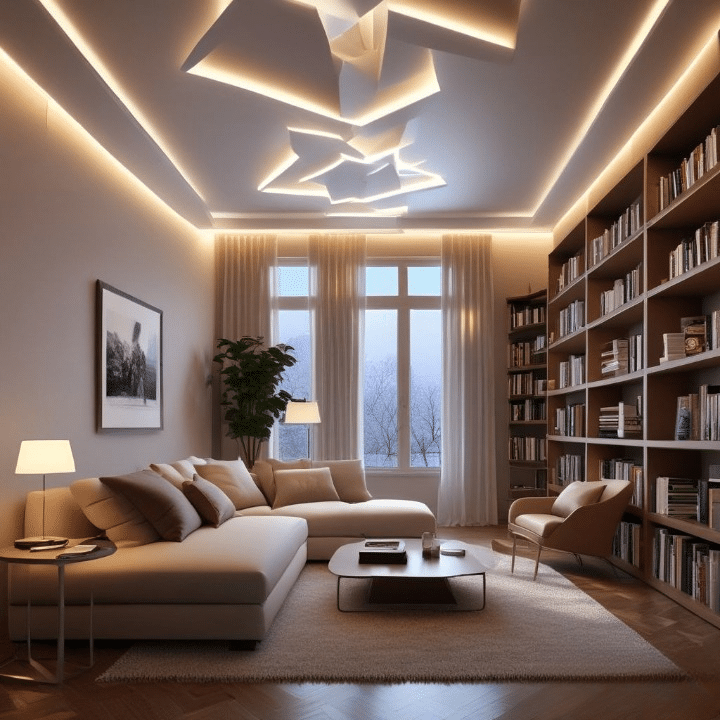
Lighting has transcended simple function to become an emotional design element. The 2025 living room features lighting systems that respond to and even anticipate moods. Some systems sync with your biorhythms, gradually shifting throughout the day to support your natural energy patterns.
The latest innovation is context-aware lighting that reads the room—literally. If your having a lively game night, the system brightens and energizes. During a quiet evening of reading, it creates gentle pools of focused light. Some systems even integrate with your entertainment choices, extending the visual experience of whatever you’re watching or listening to throughout the entire room.
Regenerative Materials
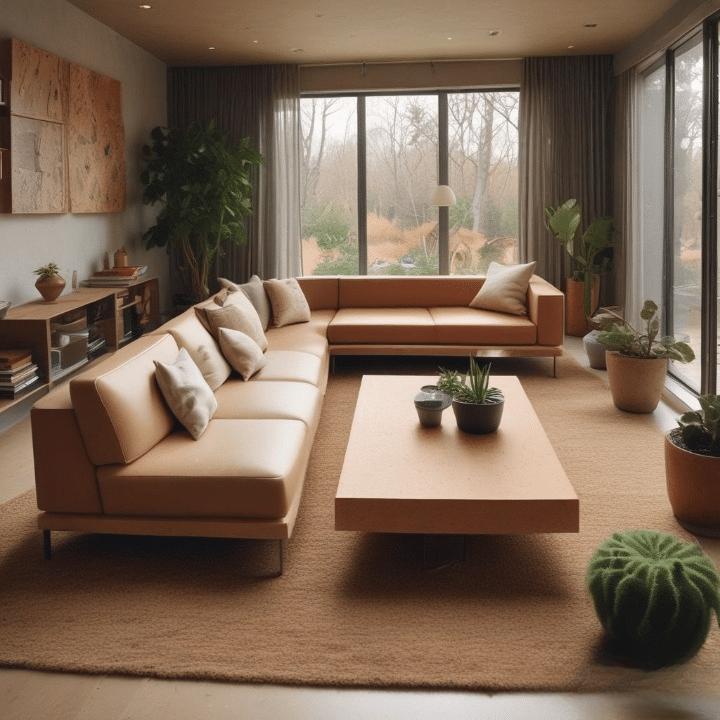
Sustainability isn’t just nice-to-have anymore—it’s expected. But 2025 has taken things a step further with regenerative materials that actually improve the environment. Living room furniture now commonly features fabrics made from captured carbon emissions or woods harvested through restorative forestry practices.
The newest developments include materials that actively purify your indoor air or regulate humidity. Some cutting-edge textiles can absorb harmful VOCs and break them down into harmless components. The best part? These materials don’t sacrifice beauty for function—they’re as gorgeous as they are good for the planet.
Neo-Maximalism
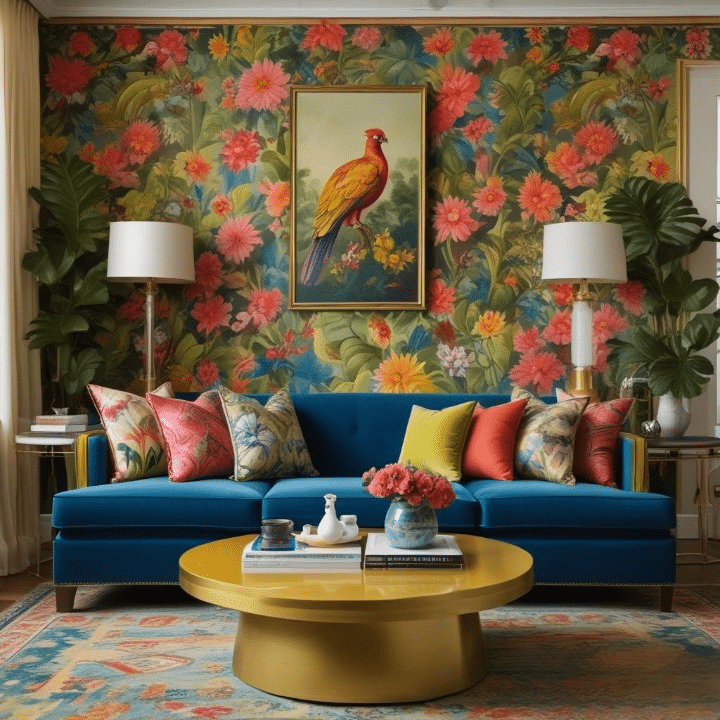
After years of minimalist dominance, maximalism has returned—but with a disciplined approach that prevents chaos. This isn’t your grandma’s cluttered living room; it’s a carefully curated abundance that still maintains visual harmony.
Pattern mixing has reached new heights of sophistication, with designers layering seemingly contradictory prints that somehow work together perfectly. Collections are displayed in museum-quality arrangements. The key difference from previous maximalist eras is the emphasis on negative space—even the most abundant designs incorporate breathing room that gives the eye places to rest.
Acoustic Optimization
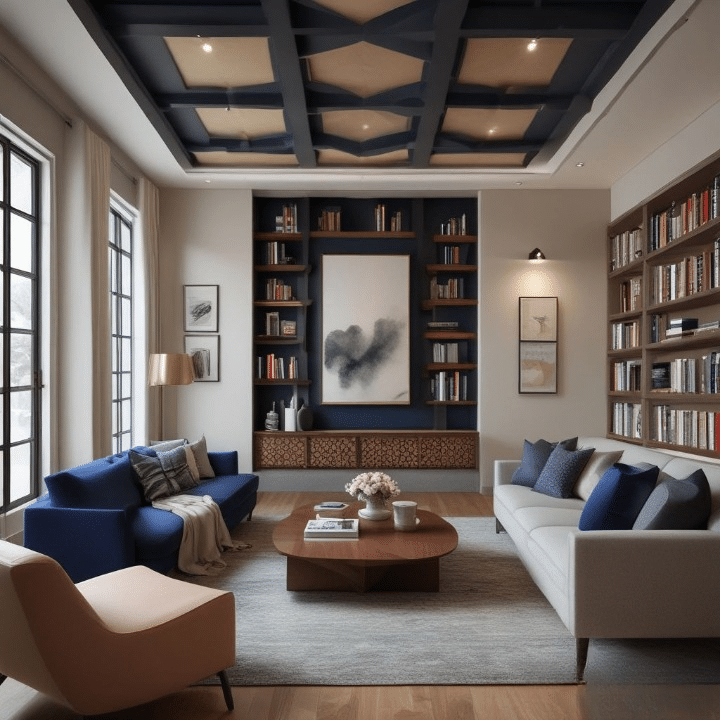
As our homes continue to serve multiple functions, controlling sound has become paramount. The 2025 living room incorporates acoustic elements that would have previously been found only in recording studios or concert halls.
Decorative sound-absorbing panels, strategic furniture placement, and specialized textiles all work together to create spaces where conversations can happen in one area without disturbing someone working quietly in another. Some homes are even incorporating adjustable acoustic elements—panels that can be rotated to either reflect or absorb sound depending on the activity taking place.
Heritage Color Stories
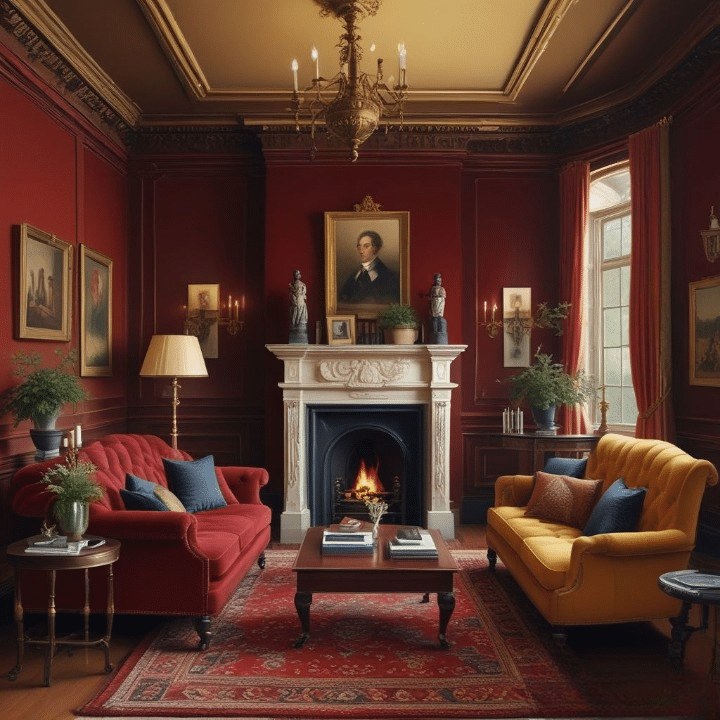
While neutrals will never disappear entirely, 2025 has embraced rich, storied colors with cultural significance. Rather than following trend forecasts, homeowners are choosing palettes that reflect their heritage or places that hold personal meaning.
What makes this trend special is the depth of research involved. People aren’t just picking a “Mediterranean blue” because it looks nice—their researching the specific pigments used in their ancestral regions, understanding the cultural significance of certain hues, and incorporating those stories into their spaces. The result is living rooms with colors that feel deeply personal rather than plucked from a trend report.
Responsive Textiles

Textiles have gotten a serious tech upgrade in 2025. Fabrics now respond to environmental conditions—cooling when the room gets warm, warming when it’s chilly, and even changing color subtly throughout the day to reflect natural light patterns.
The innovation that’s really making waves is programmable texture. Some high-end fabrics can actually shift from smooth to textured based on preference or need. Imagine a sofa that’s sleek and crisp for a formal gathering, then becomes soft and nubby when you want to cuddle up with a book. This technology has finally become accessible enough that we’re seeing it in average homes, not just design showcases.
The New Hearth: Reimagined Fireplaces
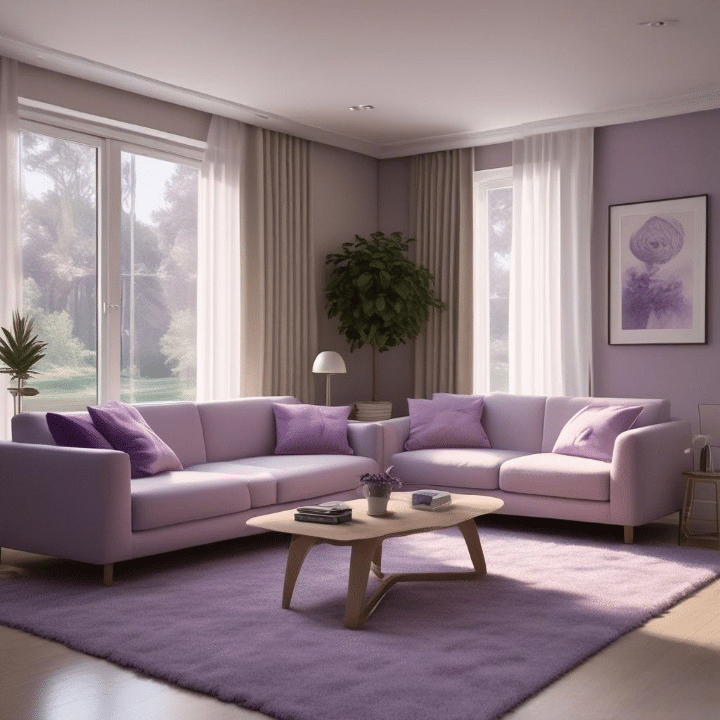
Fireplaces have undergone a conceptual revolution. No longer just a heat source or focal point, the 2025 fireplace functions as an art installation, light source, and sometimes even a cooking element all in one.
Bioethanol fireplaces with sculptural elements that create mesmerizing flame patterns are particularly popular. Some designs incorporate water elements that create steam alongside flame for a multi-sensory experience. What’s particularly interesting is the movement away from the traditional wall placement—central, floating fireplaces that can be viewed from all angles are defining the most forward-thinking living rooms this year.
Multi-Generational Inclusivity
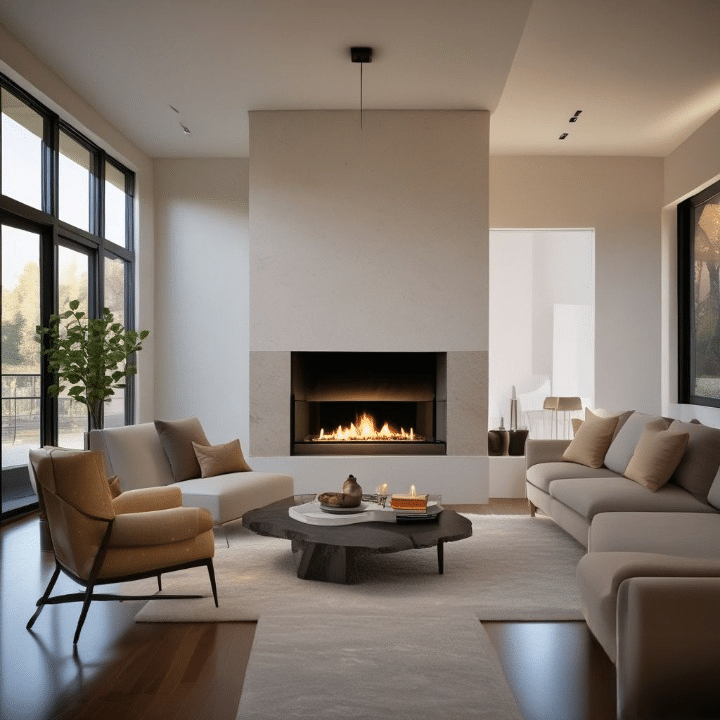
Living rooms in 2025 acknowledge that spaces need to work for everyone, regardless of age or ability. This isn’t about institutional-looking accommodations but rather beautiful, thoughtful design that works for all.
Furniture now commonly features adjustable heights, supportive elements that don’t look medicinal, and layouts that accommodate mobility devices without making them the focus. The best designs incorporate these elements so seamlessly that they’re only noticeable in their use, not their appearance. Technology plays a role too, with voice-activated elements that benefit both tech-savvy teens and grandparents with limited mobility.
Sensory Design

The 2025 living room engages all five senses intentionally. Beyond just looking good, these spaces are designed to feel good, sound good, smell good, and sometimes even taste good (hello, built-in herb gardens that double as decor).
Textural contrast has become a major focus, with designers carefully considering how surfaces feel beneath fingertips. Scent diffusion systems are being built into ventilation rather than relying on plug-ins or candles. Some cutting-edge homes even feature subtle flavor experiences—like entrance areas with essence diffusers that prepare the palate for what might be cooking in the kitchen. It’s a fully immersive approach to living.
Furniture That Tells Time
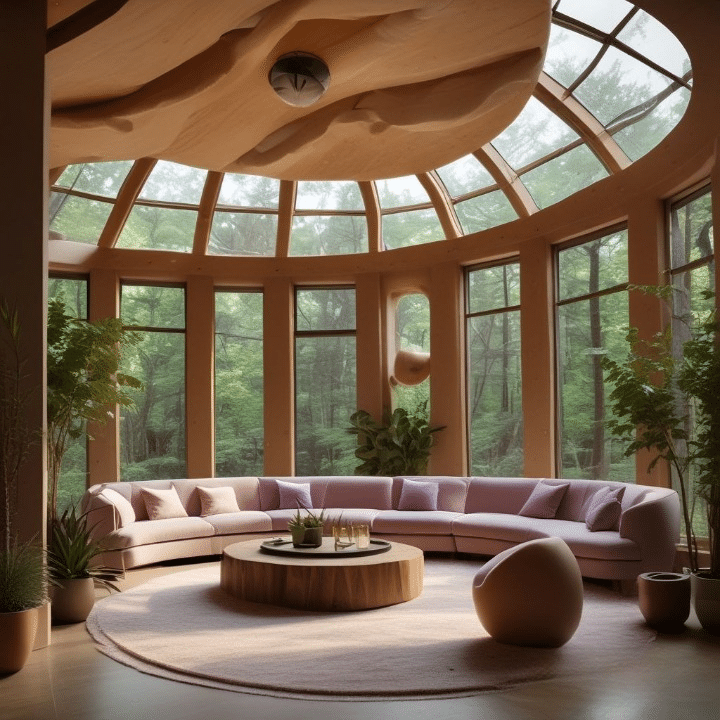
In our increasingly digital world, the 2025 living room often incorporates elements that mark the passage of time in tangible ways. This isn’t about clocks, but rather design elements that shift and change as hours, days, or seasons pass.
Light wells that track the sun’s movement across the floor, materials that patina beautifully over time, or installations that respond to weather patterns outside all connect us to natural rhythms. There’s something deeply comforting about these features in a world where time often feels abstract and disconnected from physical reality.
Virtual Reality Integration
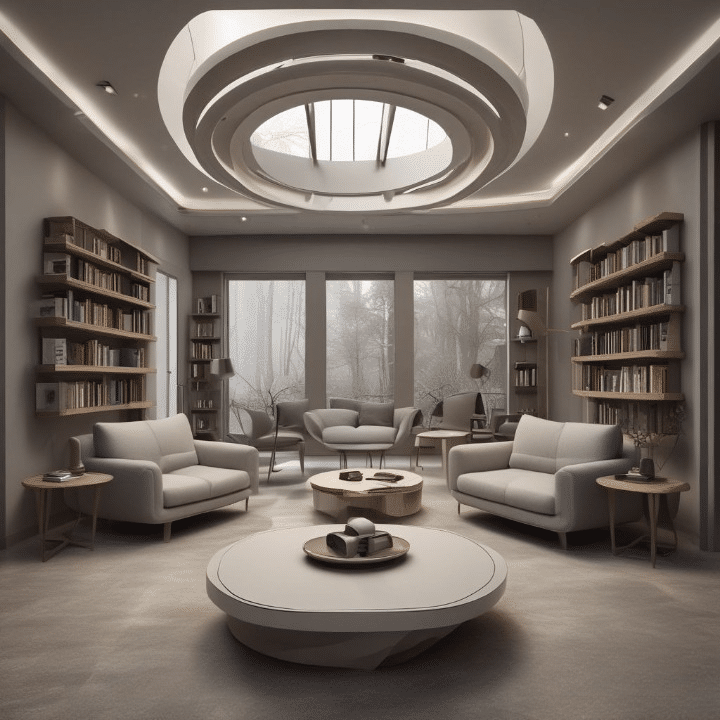
VR has finally found its place in the living room, but not in the way we expected. Rather than isolating users in individual experiences, the 2025 approach to VR is communal and integrated with physical space.
Projection mapping creates immersive environments that everyone in the room can experience without headsets. Designated areas transform from normal living space to virtual experience zones with the touch of a button. What’s most interesting is how furniture and physical elements are designed to serve both everyday function and enhance virtual experiences—like modular seating that reconfigures to match the virtual landscape being projected.
Climate-Responsive Design
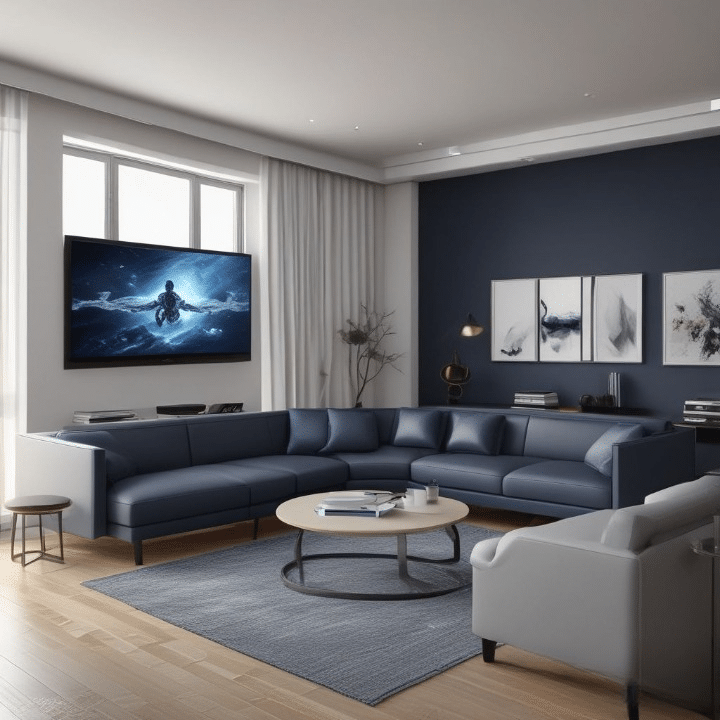
With weather patterns becoming increasingly unpredictable, 2025 living rooms are designed to respond to whatever mother nature brings. This goes far beyond energy efficiency into true climate adaptability.
Design elements automatically adjust to maximize natural cooling during heat waves or preserve warmth during cold snaps. Materials are chosen for their ability to regulate humidity and air quality during environmental extremes. Some forward-thinking homes even feature living rooms that can transform from indoor to semi-outdoor spaces when conditions permit, with walls that open completely to blend with exterior environments.
The Return of Room Dividers
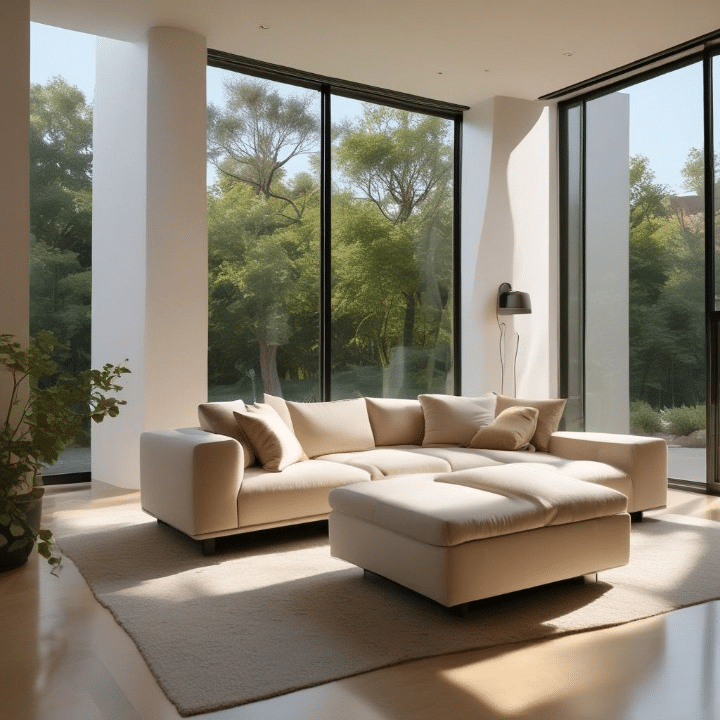
Open concept isn’t dead, but it’s definitely evolved. The 2025 living room embraces partial separation through the revival of room dividers—with a thoroughly modern twist.
Today’s dividers are multifunctional marvels: rotating bookcases, planted screens that improve air quality, artistic installations that double as storage, or light-filtering elements that create different zones without blocking flow. The key innovation is flexibility—these aren’t permanent walls but adaptable elements that can be reconfigured as needs change, sometimes even daily.
Heirloom Investment Pieces
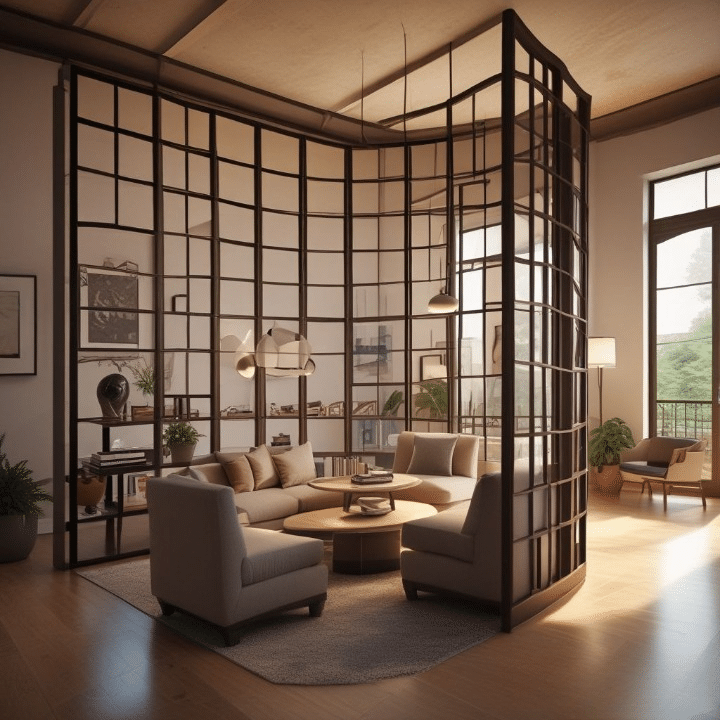
In reaction to years of disposable furniture, 2025 has seen a dramatic shift toward investment pieces designed to become future heirlooms. The living room is where this trend is most evident, with families choosing signature items of exceptional quality meant to last generations.
What’s notable is how these pieces combine traditional craftsmanship with forward-thinking design. They’re not antique reproductions but contemporary classics that will still look relevant decades from now. Many feature construction details specifically designed for future repair or updating—like removable covers in standardized dimensions that will remain available for replacement.
Embedded Art Experiences
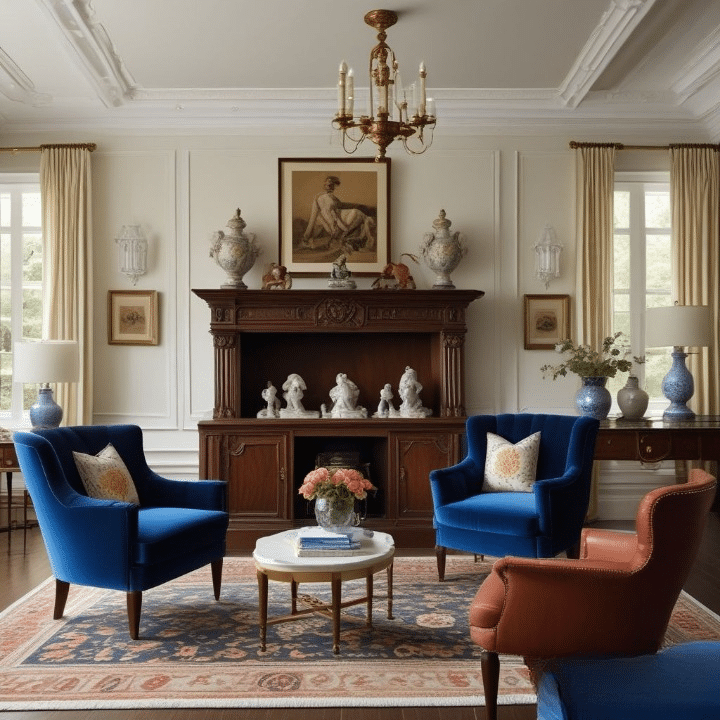
Art has broken free from walls in the 2025 living room. Rather than simply hanging paintings or photographs, homeowners are integrating art experiences directly into architectural elements and everyday objects.
Floors feature inlaid artistic patterns that reveal themselves as you walk. Ceiling installations respond to activity below. Even functional items like coffee tables or lighting fixtures are commissioned as art pieces. The line between furniture, architecture, and art has blurred to the point of disappearing entirely in the most innovative spaces.
Personal Retreat Corners
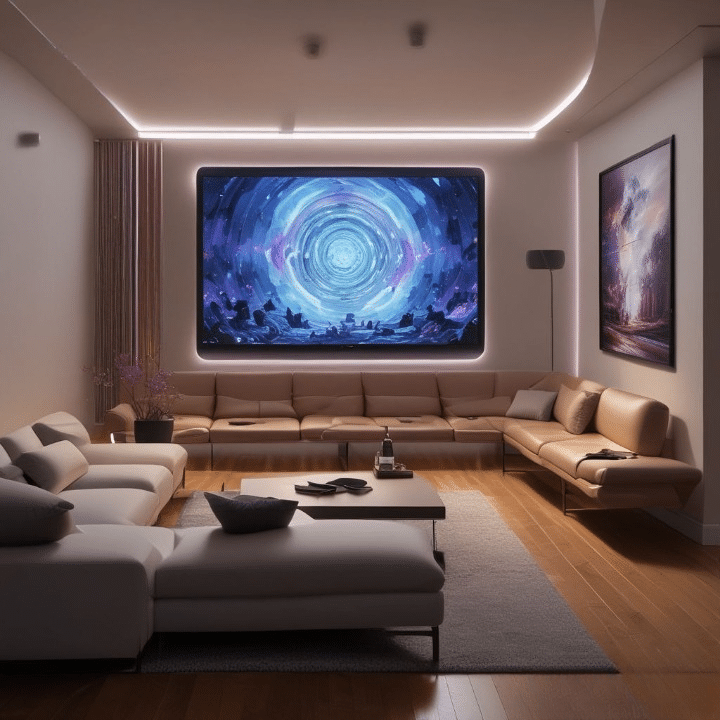
While the living room remains primarily social, 2025 designs acknowledge our need for momentary solitude by incorporating intimate retreat spaces within the larger room. These aren’t separate rooms but thoughtfully designed nooks that offer psychological privacy.
Reading corners with acoustic properties that create sound bubbles, window seats with adjustable privacy screens, or cozy conversation pits that feel removed from the main space are all manifestations of this trend. The best designs allow someone to feel alone with their thoughts even while technically remaining in the shared family space.
Cultural Fusion Without Appropriation
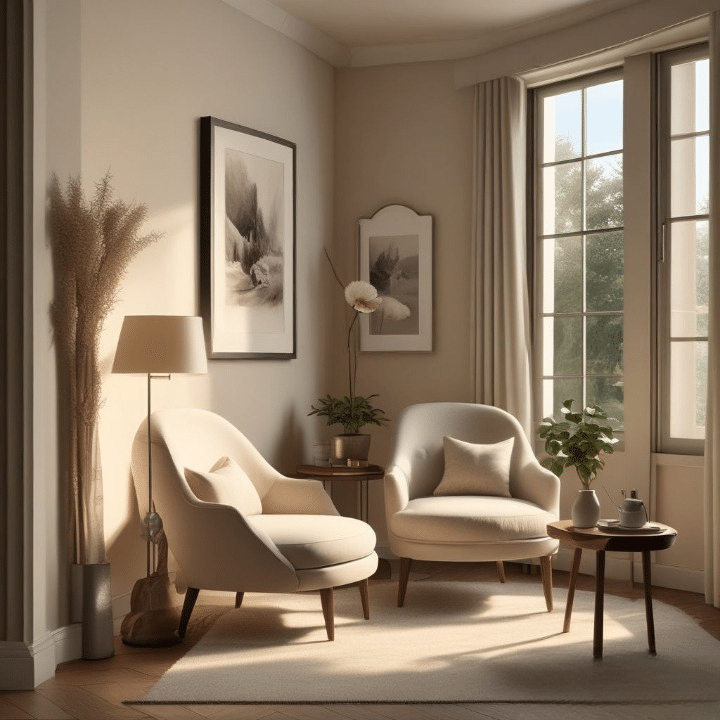
The globalized design approach of previous decades has matured into something more thoughtful. The 2025 living room often features elements from multiple cultural traditions, but with a deep respect for context and origin.
Designers and homeowners are collaborating directly with artisans from other cultures, compensating them fairly for both their work and their intellectual property. Digital authentication ensures that pieces are what they claim to be, and embedded information shares the cultural significance appropriately. It’s a beautiful evolution from both the cultural siloing of the distant past and the thoughtless borrowing of the recent past.
Tech-Free Zones
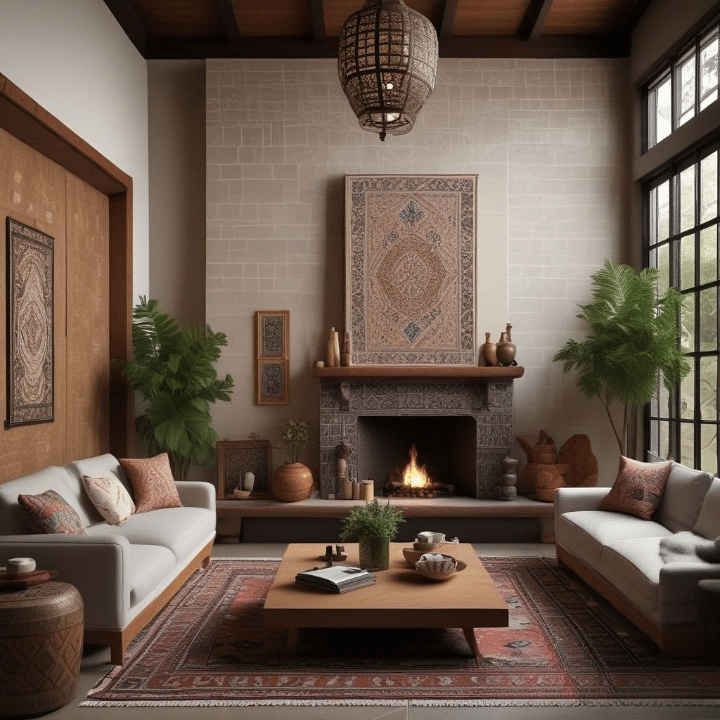
As technology has become utterly pervasive, the most forward-thinking living rooms of 2025 deliberately create tech-free zones where digital distraction is physically impossible. These aren’t just areas with a “no phones” policy but spaces actually designed to block signals and discourage device use.
Faraday fabrics woven into certain seating areas, materials that won’t accommodate device resting, and furniture arrangements that naturally encourage eye contact rather than screen viewing all contribute to these intentional analog islands. What’s fascinating is that these tech-free zones have become status symbols—a luxury for those who can afford to disconnect.
Nostalgic Futurism
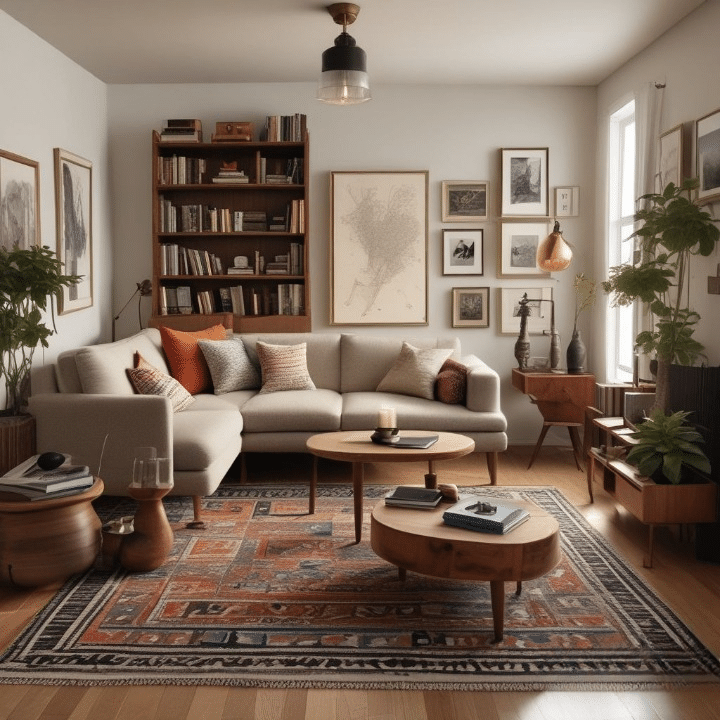
Perhaps the most visually distinctive trend of 2025 is what designers are calling “nostalgic futurism”—a aesthetic that combines retro elements from various decades with cutting-edge materials and technology. Think 1970s conversation pits reimagined with smart fabrics, or Art Deco patterns rendered in light-generating materials.
This trend rejects the false choice between tradition and innovation, instead creating rich design languages that reference the past while embracing the future. It’s particularly evident in lighting choices, where familiar forms are executed in completely novel ways, creating spaces that feel both comforting and surprising.
Ephemeral Design Elements
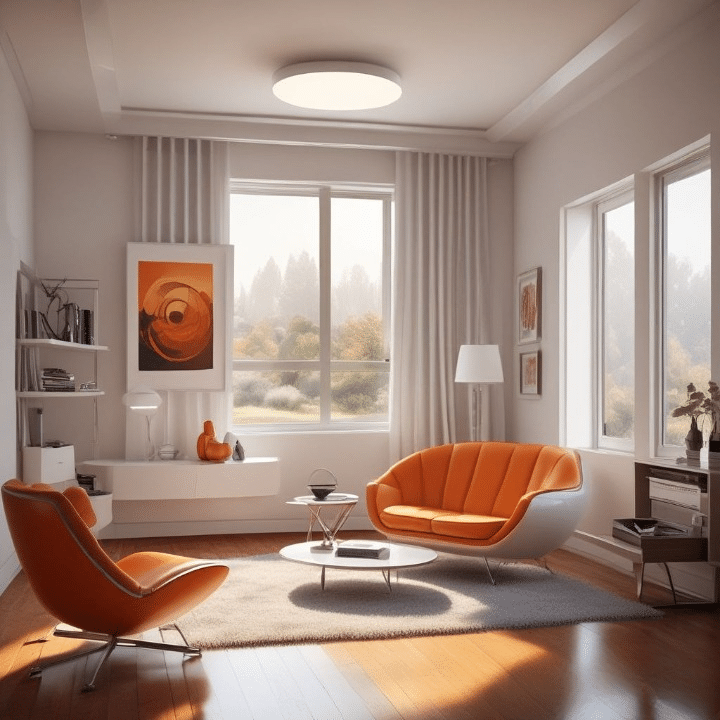
Not everything in the 2025 living room is built to last. There’s a growing appreciation for intentionally temporary design elements that are meant to be experienced rather than preserved. This approach brings a theatrical quality to everyday living.
Seasonally changing installations, dissolving materials that transform over weeks or months, or projected elements that exist only for special occasions all fall into this category. These ephemeral aspects create a living room that evolves continually, offering new experiences even to those who live with it daily. It’s a rejection of the static perfection that characterized design in previous decades.
Intuitive Interactivity
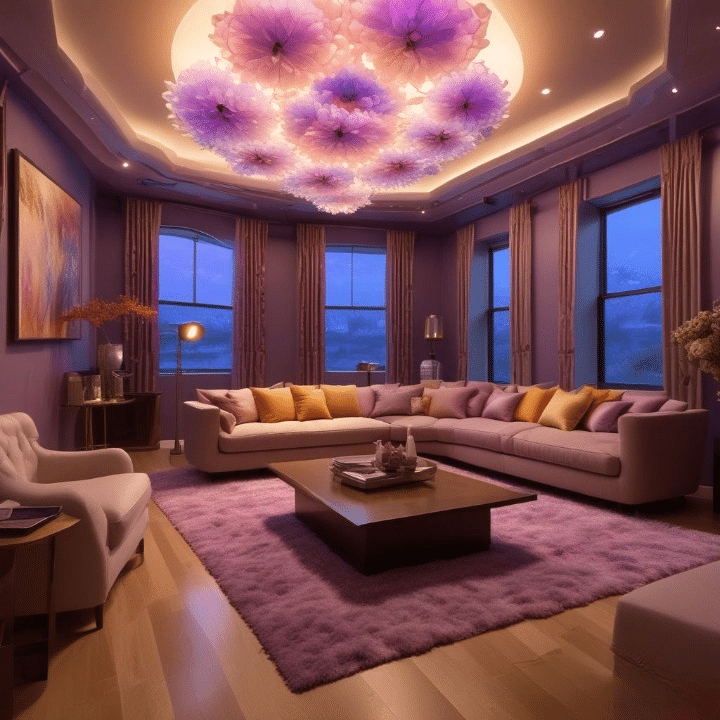
The final defining trend of 2025 living rooms is a shift toward spaces that learn, adapt, and anticipate without explicit programming. Using ambient computing rather than command-based systems, these rooms respond to patterns and preferences organically.
Lighting that gradually learns your preferences and adjusts automatically, temperature and sound that respond to the number of people in the room and their activity levels, or furniture that subtly shifts to accommodate your posture—all without requiring voice commands or app adjustments. The technology recedes completely into the background, creating environments that feel magical rather than mechanical.
As we move through 2025, these living room trends reflect our complex relationship with technology, sustainability, personalization, and human connection. The most successful spaces don’t slavishly follow any single trend but rather thoughtfully incorporate elements that resonate with the people who actually live there. After all, the ultimate measure of good design isn’t how closely it matches what’s “in” but how well it serves those who experience it every day.
The living room continues to evolve as perhaps our most important domestic space—one that must simultaneously connect us to others, to ourselves, and to the wider world beyond our walls. These trends point toward a future where our living environments do more than shelter us; they enhance every aspect of our lives in ways both subtle and profound.
Microlocal Materials
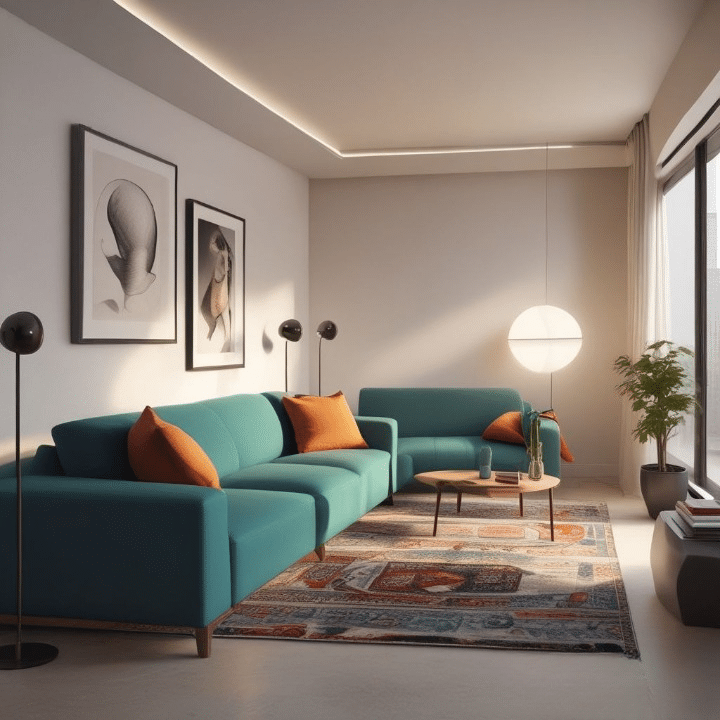
The hyperlocal movement has evolved into something even more specific: microlocal sourcing. Forward-thinking homeowners are now commissioning living room elements made from materials harvested within a 10-mile radius of their homes. This isn’t just about reducing carbon footprints—it’s about creating spaces that literally belong to their environment.
I’ve seen everything from stunning coffee tables made from fallen trees in neighborhood parks to accent walls featuring stones collected from nearby creeks. Some designers are even creating custom terrazzo using local sand and pebbles with GPS coordinates of their collection sites documented. It creates a profound sense of place that mass-produced furniture simply cant deliver.
Ancestral Tech Integration
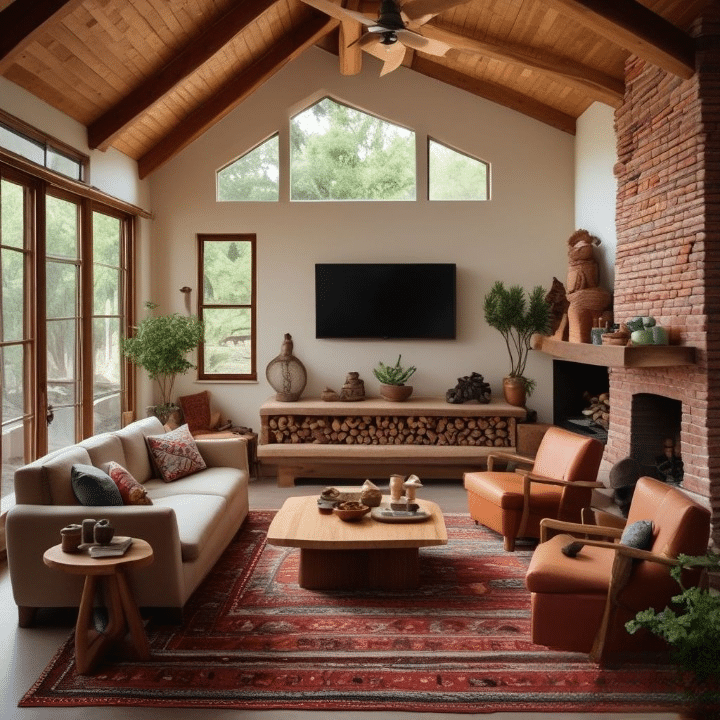
Living rooms are becoming repositories of family memory through what designers are calling “ancestral tech.” This fascinating trend merges family history with cutting-edge technology, creating multisensory connections to previous generations.
Digital frames that don’t just display old photos but use AI to animate them, creating lifelike movements. Sound systems that can recreate the acoustic environment of grandparents’ long-gone homes based on oral histories and photographs. Some families are even commissioning furniture with hidden compartments containing digitized family archives, accessible via fingerprint recognition that’s programmed to work only for family members.
Chronobiological Design
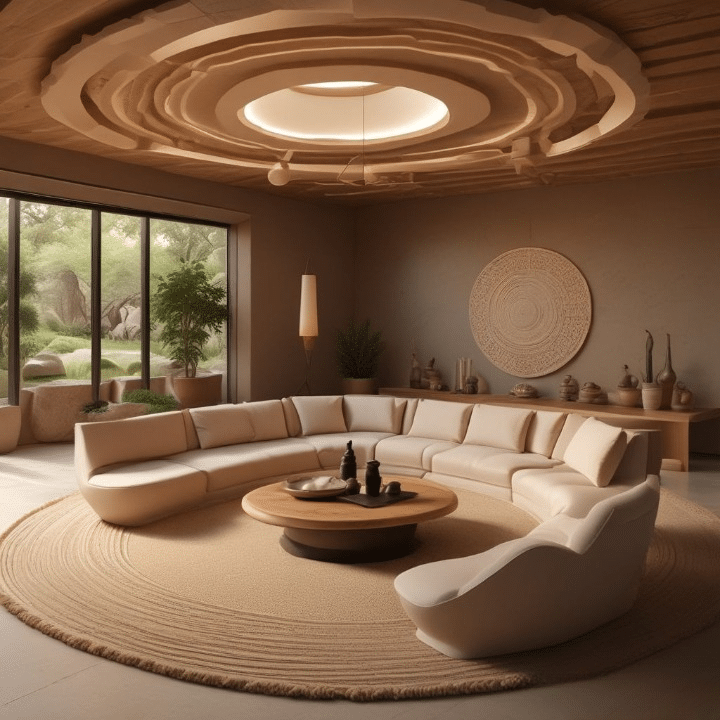
The science of chronobiology—how our bodies respond to light and time—has revolutionized living room design in 2025. Spaces now shift subtly throughout the day to support our natural biological rhythms rather than fighting against them.
Morning configurations maximize exposure to blue-spectrum light and energizing elements. Evening setups gradually filter out stimulating wavelengths and introduce calming features. The most sophisticated systems even adjust based on the occupants’ measured sleep quality from the night before. The goal isn’t just a beautiful space but one that actively contributes to physiological well-being.
Digital Patina
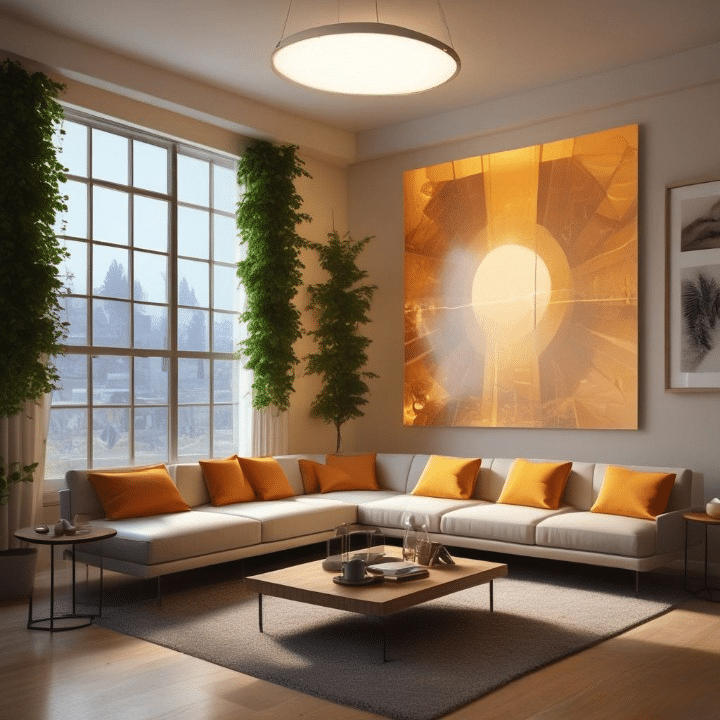
We’ve finally moved beyond the sterile perfection of early smart homes. In 2025, digital elements in living rooms deliberately show their age and use history, developing what designers call “digital patina.”
Screens develop subtle wear patterns based on what’s been displayed most frequently. Voice assistants’ tones evolve slightly based on the types of interactions they’ve had with family members. Even lighting systems retain “memory traces” of significant gatherings, subtly recreating aspects of the illumination during important past events. It makes technology feel lived-in and personal rather than coldly perfect.
Zero-Visibility Storage
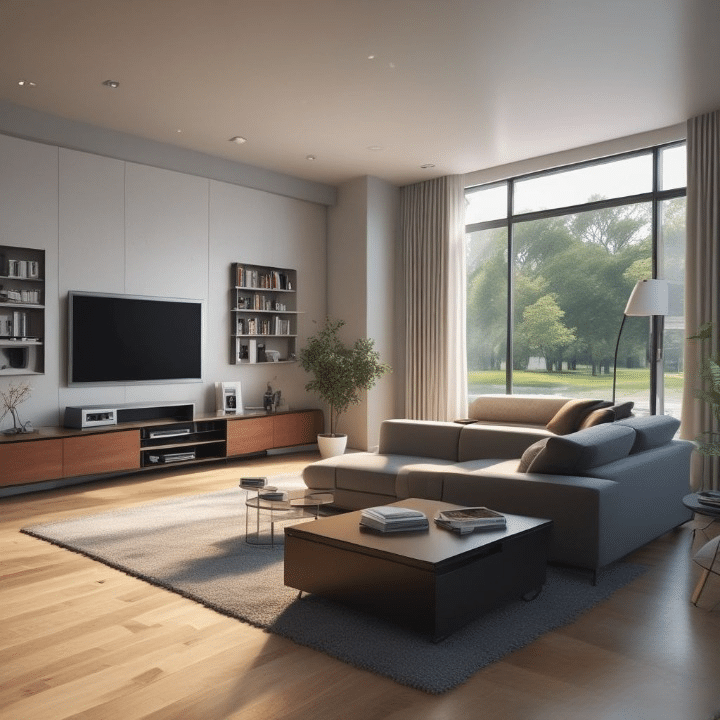
The cluttered maximalism of recent years has evolved into a more refined approach where personal items are present but not always visible. The 2025 living room features what’s being called “zero-visibility storage”—places to keep beloved objects accessible but completely hidden until needed.
Furniture appears to float with no visible storage, yet contains sophisticated compartment systems that appear with a touch or voice command. Walls that seem solid conceal collection display areas that rotate into view for enjoyment, then away for safekeeping. It’s allowing people to own more without visual overwhelm, striking a balance between minimalist aesthetics and maximalist ownership.
Nomadic Furniture Systems
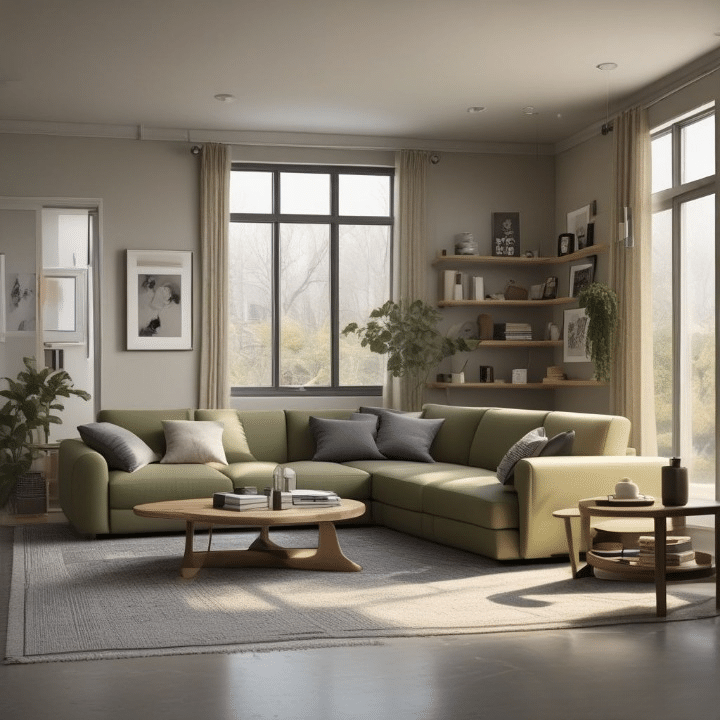
As housing continues to evolve and people move more frequently, 2025 has seen the rise of truly nomadic furniture systems designed specifically for transience. These aren’t just lightweight pieces but comprehensive systems engineered for regular relocation.
High-performance components connect without tools, breakdown to flat configurations for transport, and adapt to different room dimensions without looking makeshift. What’s truely revolutionary is how these systems remember their previous configurations—with small embedded processors that can guide reassembly in a new space while maintaining the relationships between pieces that worked well before.
Taste-Responsive Environments
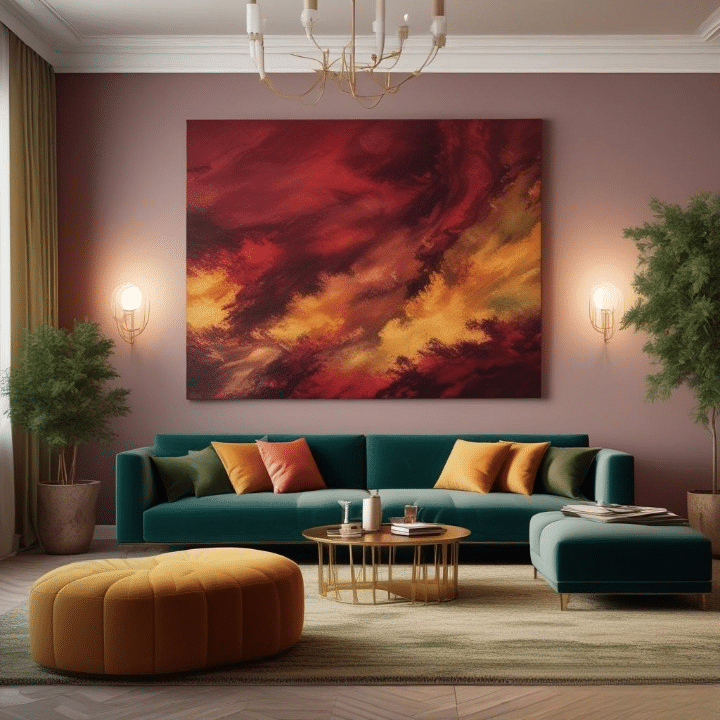
The most cutting-edge living rooms of 2025 respond not just to sight, sound, and touch, but to taste as well. This unexpected trend links food and beverage preferences to environmental elements, creating multi-sensory harmony.
If you’re enjoying a bright, acidic wine, lighting subtly shifts to complement those flavor notes. Planning a spicy meal? The room’s aromatic system releases complementary scents that enhance the dining experience. Some systems even adjust temperature and sound based on menu plans. It’s creating living rooms that function as gastronomic amplifiers, making every meal more immersive.
Silence Architecture
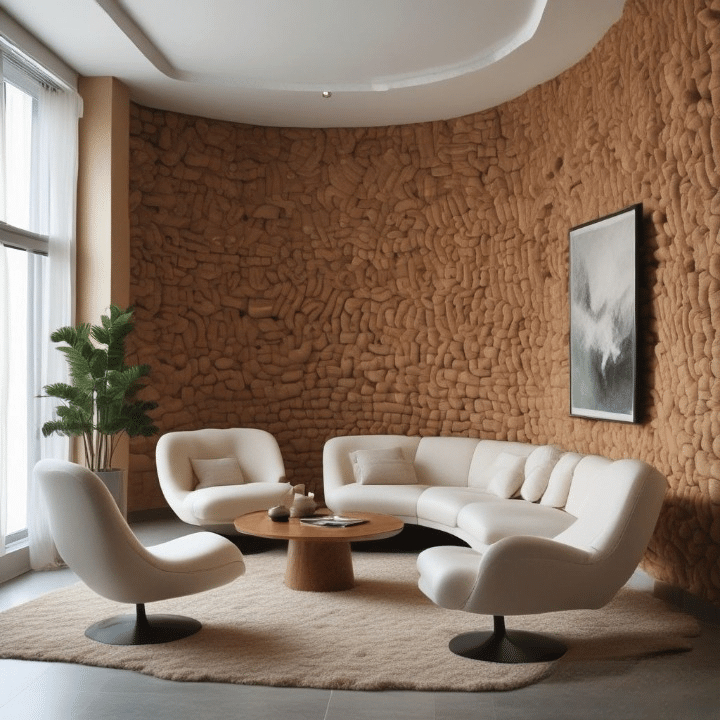
In our increasingly loud world, silence has become the ultimate luxury. The “silence architecture” movement is reimagining living rooms as acoustic sanctuaries with unprecedented sound control capabilities.
These spaces feature variable acoustics that can create almost supernatural quiet when desired, with materials that absorb specific frequency ranges based on the types of noise pollution in that particular location. Some homes even incorporate active noise cancellation built directly into architectural elements. What distinguishes this from earlier acoustic treatments is the focus on creating natural-feeling sound environments rather than deadened spaces.
Heirloom Digital Commissioning
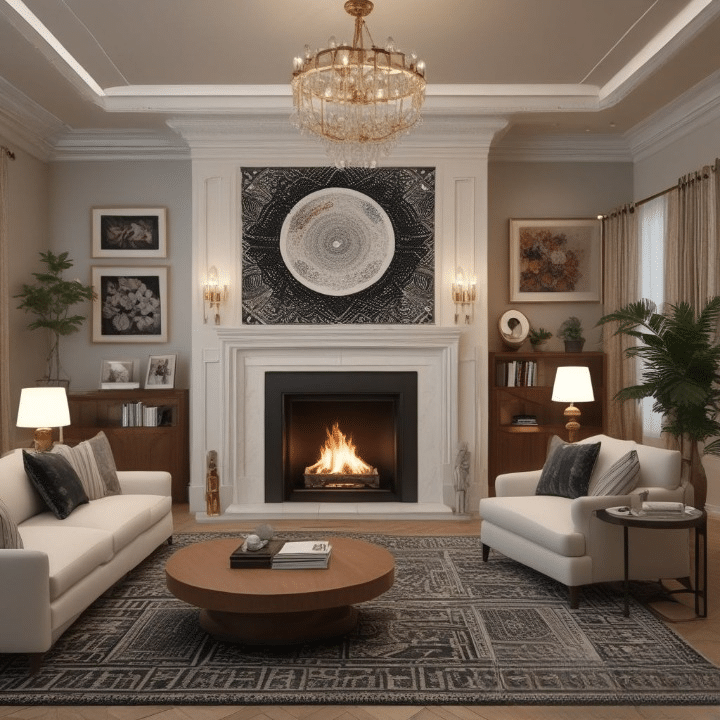
A fascinating evolution in living room decor is the commissioning of digital heirlooms—virtual elements created specifically to be passed down through generations, just like physical antiques once were.
Families are working with digital artists to create evolving virtual installations that respond to and record family history over decades. Unlike physical objects that degrade, these pieces actually become richer and more valuable over time as they accumulate family data. Some even incorporate genetic information, subtly changing their appearance or behavior based on which family members are present in the room.
Rewilded Flooring
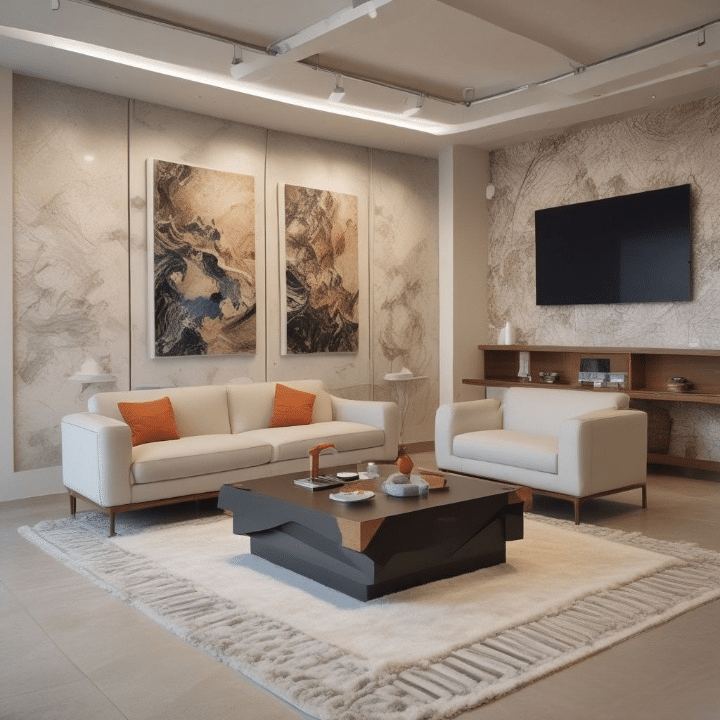
Floors have broken free from rigid uniformity in 2025, with “rewilded flooring” becoming a defining feature of innovative living rooms. This approach deliberately introduces controlled chaos to what was traditionally the most ordered surface in a home.
Living moss sections interspersed with hardwood, intentionally weathered sections that create organic pathways, or floors that incorporate small, contained growing areas for seasonal plants. The most daring versions even include micro-topography—subtle changes in height and texture that mimic natural ground. The psychological effect is profound, creating spaces that feel alive underfoot.
Climate Memory Preservation
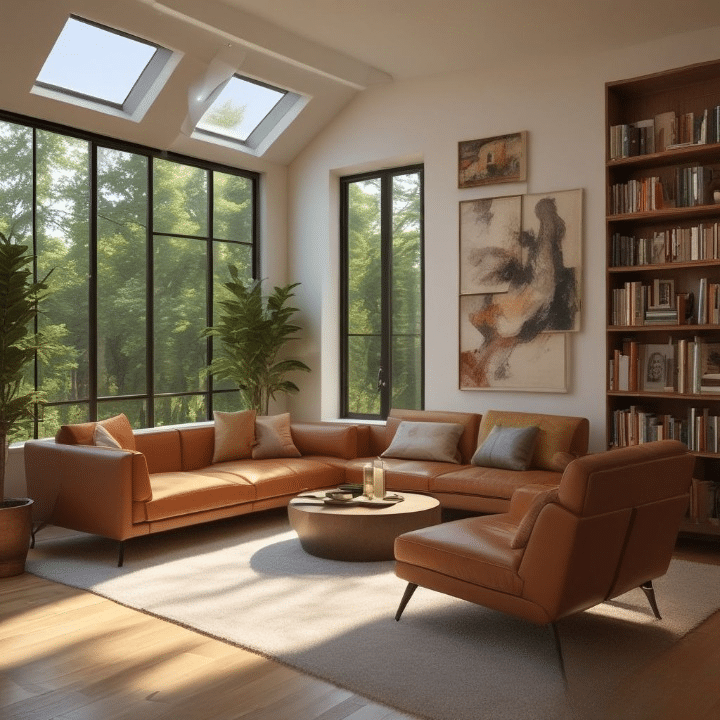
As climate change alters environments worldwide, 2025 living rooms often include elements specifically designed to preserve the memory of disappearing landscapes and weather patterns. It’s part design statement, part environmental documentation.
Custom installations that recreate the quality of light from endangered ecosystems, soundscapes recorded from locations threatened by rising seas, or materials preserved from climate-vulnerable regions. These aren’t just decorative choices but deliberate acts of witness and remembrance, creating emotional connections to planetary changes happening too slowly to perceive day-to-day.
Scent Zoning
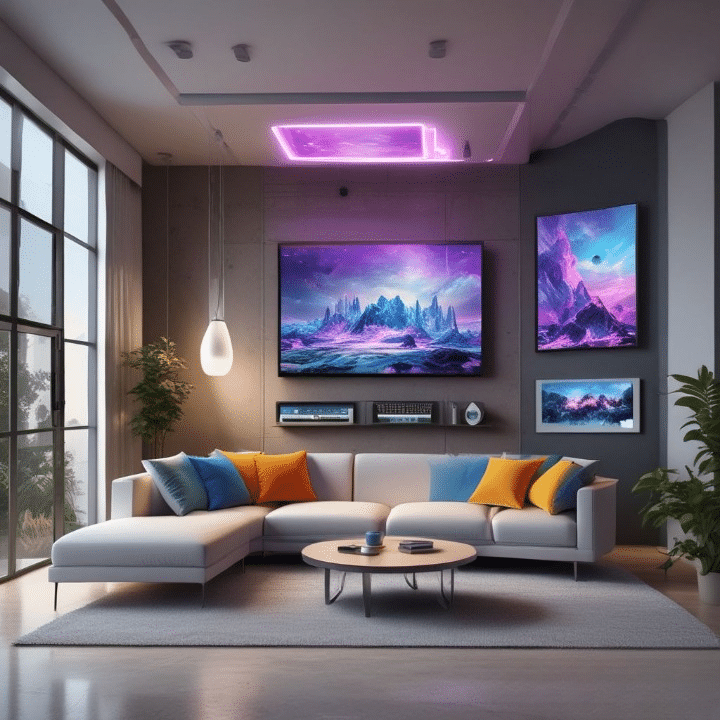
Olfactory design has reached new sophistication with the advent of “scent zoning”—the creation of distinct aromatic territories within the same living space. Unlike simple diffusion, this approach creates controlled scent experiences that don’t bleed into each other.
Directional diffusion systems create invisible but perceptible boundaries between areas designated for different activities. A reading nook might feature cognitive-enhancing botanicals, while a conversation area offers socially stimulating notes. The technology allowing this precision has finally become accessible for average homes, not just luxury installations or commercial spaces.
Collaborative AI Design Partners

Rather than hiring traditional interior designers, many homeowners in 2025 are working with AI design systems that function more like collaborative partners than tools. These systems have developed distinct aesthetics and approaches, with some even becoming celebrated “names” in the design world.
What makes this trend significant is the truly collaborative nature—these aren’t just programs that execute human directions but entities that contribute original ideas based on their own design evolution. The living rooms that result from these human-AI partnerships often feature solutions neither would have developed independently, creating genuinely novel spaces.
Temporal Furniture Arrangements
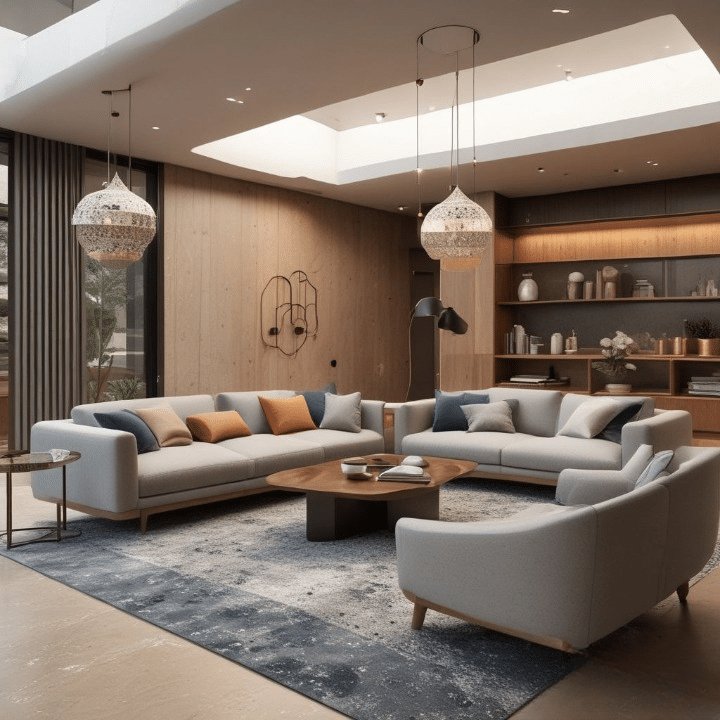
Static furniture arrangements have given way to what designers call “temporal setup”—living rooms deliberately reconfigured to align with specific times of day, week, or year. This goes beyond mere functionality into ritual and rhythm.
Morning configurations might emphasize individual activities with separated seating, while evening arrangements bring elements together for connection. Seasonal shifts might change not just decorative elements but the fundamental organization of space. These changes happen regularly enough to create anticipated patterns without becoming burdensome chores.

Hazel Collins is the creative voice behind Room Layered. With years of blogging experience, she shares her passion for home decor, DIY projects, and styling tips to help readers create beautiful, personalized spaces. Her ideas blend charm with practicality, making home inspiration feel both achievable and stylish.